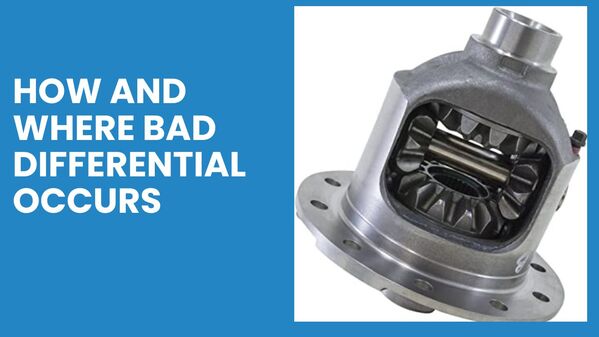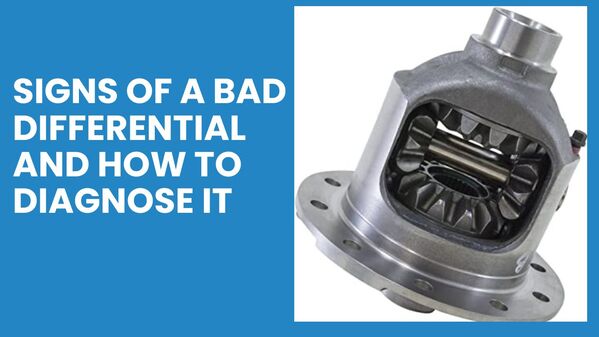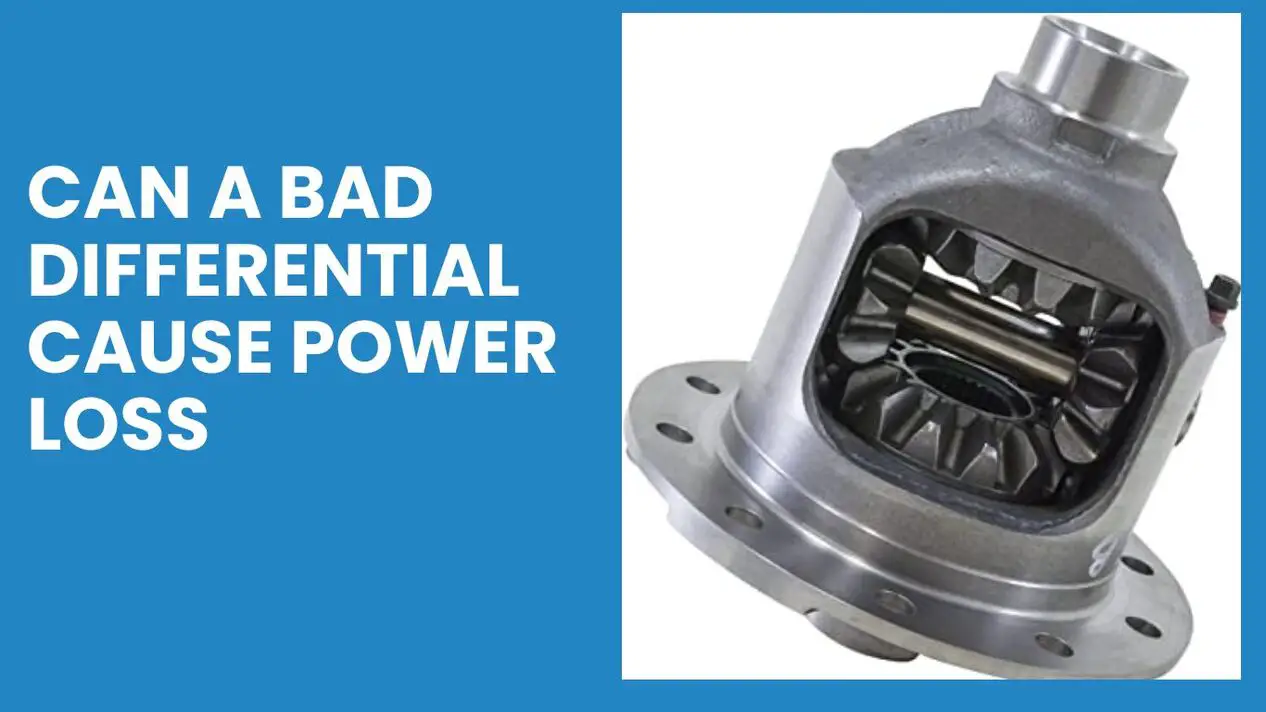Are you experiencing a loss of power in your vehicle? It could be due to a bad differential.
A bad differential can cause your vehicle to lose power but don’t worry, it’s usually due to some common issues like worn-out gears, low fluid levels, leaks, or contaminated fluid. Just remember to maintain your differential regularly, replace the fluid when needed, and keep an eye out for any signs of trouble!
The differential is a vital component in your car’s drivetrain that helps transfer power from the engine to the wheels. It plays a crucial role in allowing wheels to spin at different speeds while still transmitting power to the road.
However, as with any mechanical component, the differential can develop issues that can affect a vehicle’s performance. One such problem is power loss.
In this blog post, we’ll delve deeper into the question of whether a bad differential can cause power loss in your vehicle. We’ll explore the different types of differentials, the causes and symptoms of power loss, and what you can do to prevent or address differential issues.
By the end of this article, you’ll have a better understanding of how your vehicle’s differential works and what to look out for to keep it running smoothly.
The Function of a Differential
A differential is a key component in a vehicle’s drivetrain. It allows the wheels to rotate at different speeds.
This is crucial for turning, as the outer wheel needs to spin faster than the inner wheel.
The differential is located between the vehicle’s drive wheels. It works by splitting the engine torque two ways, allowing each output to spin at a different speed.
In a standard rear-wheel drive setup, the differential is on the rear axle. Front-wheel drive vehicles have the differential integrated into the transmission. All-wheel drive and four-wheel drive vehicles have differentials on both axles.
The differential also provides a final gear reduction, slowing the rotational speed of the transmission before it reaches the wheels. This gear reduction increases the torque available to the wheels.
How and Where Bad Differential Occurs

A classic clutch-type differential can lose its ability to transmit power to the slower-spinning wheel over time, converting it to an “open” differential. This results in power loss while cruising or turning, as the differential is no longer able to distribute torque effectively. Moreover, if the differential suffers a catastrophic failure, engine torque may not be transferred to the drive wheels at all, rendering the vehicle unable to move under its own power.
There are a number of potential causes of a bad differential. Over time, the fluid in the differential can break down, which makes it less able to send power to the slower-spinning wheel and more like an open differential. This can result in power loss while moving or turning.
In addition, if the differential has a major breakdown, it may be unable to transmit any of the power from the motor to the drive wheels at all.
Other factors that can lead to a bad differential include lack of maintenance, excessive wear and tear, and improper use. Hard driving, heavy loads, and towing can put additional strain on the differential and cause it to wear out faster.
By changing the fluid and inspecting the differential on a regular basis, you can extend its useful life and catch potential problems before they become expensive to fix.
How a Bad Differential Can Lead to Power Loss

A bad differential can lead to power loss in a vehicle through several mechanisms:
- Inefficient Power Transfer: A damaged differential struggles to distribute power effectively between the wheels. This inefficiency can result in power loss, as the engine’s output is not fully transmitted to the wheels.
- Increased Friction: Wear and tear in the differential can increase internal friction. Excessive friction absorbs some of the power that should be used for driving the wheels.
- Mechanical Failures: Broken gears or bearings within the differential can lead to mechanical losses. These failures prevent the differential from functioning properly, leading to a noticeable decrease in power.
- Overheating: A failing differential can overheat due to increased friction or mechanical breakdown. Overheating can further damage the differential, exacerbating power loss.
- Lubrication Issues: Insufficient or degraded lubrication can cause the differential components to wear out faster. Poor lubrication increases resistance within the differential, hindering its ability to transfer power efficiently.
- Vibrations and Misalignments: A bad differential may cause vibrations and alignment issues. These problems can lead to uneven power distribution and loss of power, especially under load or during acceleration.
Other Causes of Power Loss for Context
Other causes of power loss in vehicles, aside from differential issues, include:
Engine Problems:
- Worn spark plugs or ignition system issues.
- Clogged fuel injectors or malfunctioning fuel pump.
- Air filter blockages reduce airflow.
- Timing belt or chain issues.
Transmission Issues:
- Faulty transmission components (gears, clutch).
- Low or contaminated transmission fluid.
- Slipping automatic transmission.
Exhaust System Blockages:
- Clogged catalytic converter.
- Restricted exhaust flow due to damaged mufflers or pipes.
Turbocharger/Supercharger Issues:
- Malfunctioning turbocharger or supercharger.
- Leaks in the boost system.
Electrical System Failures:
- Alternator problems affecting power supply.
- Weak or failing battery.
- Faulty sensors impacting engine performance.
Fuel System Problems:
- Contaminated or low-quality fuel.
- Fuel line blockages or leaks.
Air Intake System Issues:
- Problems with the mass airflow sensor.
- Leaks in the intake manifold.
Tire and Wheel Problems:
- Under-inflated or misaligned tires.
- Brake drag due to faulty brake components.
Tips for Maintaining Differential to Avoid Power Loss
Maintaining your differential is essential for optimal power transmission and fuel efficiency. It’s important to check for signs of damage or wear to ensure you don’t experience a loss of power.
Regularly replacing the differential fluid is one way to keep your vehicle running smoothly. Ensure you stick to the recommended interval from your owner’s manual, as any deviation can lead to severe problems down the line.
Be sure to monitor your parking lot for reddish-brown fluid leaking, as this could be a sign of something more serious. Any unusual sounds like clunking or whirring could indicate you need immediate servicing too.
Finally, look out for uneven tire wear, which could also signal there is an underlying problem with the differential.
If you are not confident in tackling the issue yourself, then enlist a professional technician. They can diagnose and repair it better than anyone else.
Recommend video:
Final Thought
Ultimately, the bad differential can cause power loss with other mechanical elements like gears and axles. Differentials are considered to be one of the most important pieces of a vehicle’s drivetrain, and they allow a driver to have control over their vehicle’s power.
By understanding how a bad differential can impact your car’s performance, you can take actionable steps to keep it in good condition and avoid any potential performance issues.
Regular maintenance is key in keeping your differential functioning properly, so make sure to have a certified mechanic check yours on a regular basis. It’s also wise to replace old lubricant on a regular basis as well as boost its lifespan.
Knowledge is power when it comes to fixing vehicle malfunctions, don’t be afraid to ask questions or read up on how certain parts of your car work!
Keeping your car’s power dependable will ensure you can stay safe on the roads no matter what travel route you take!
